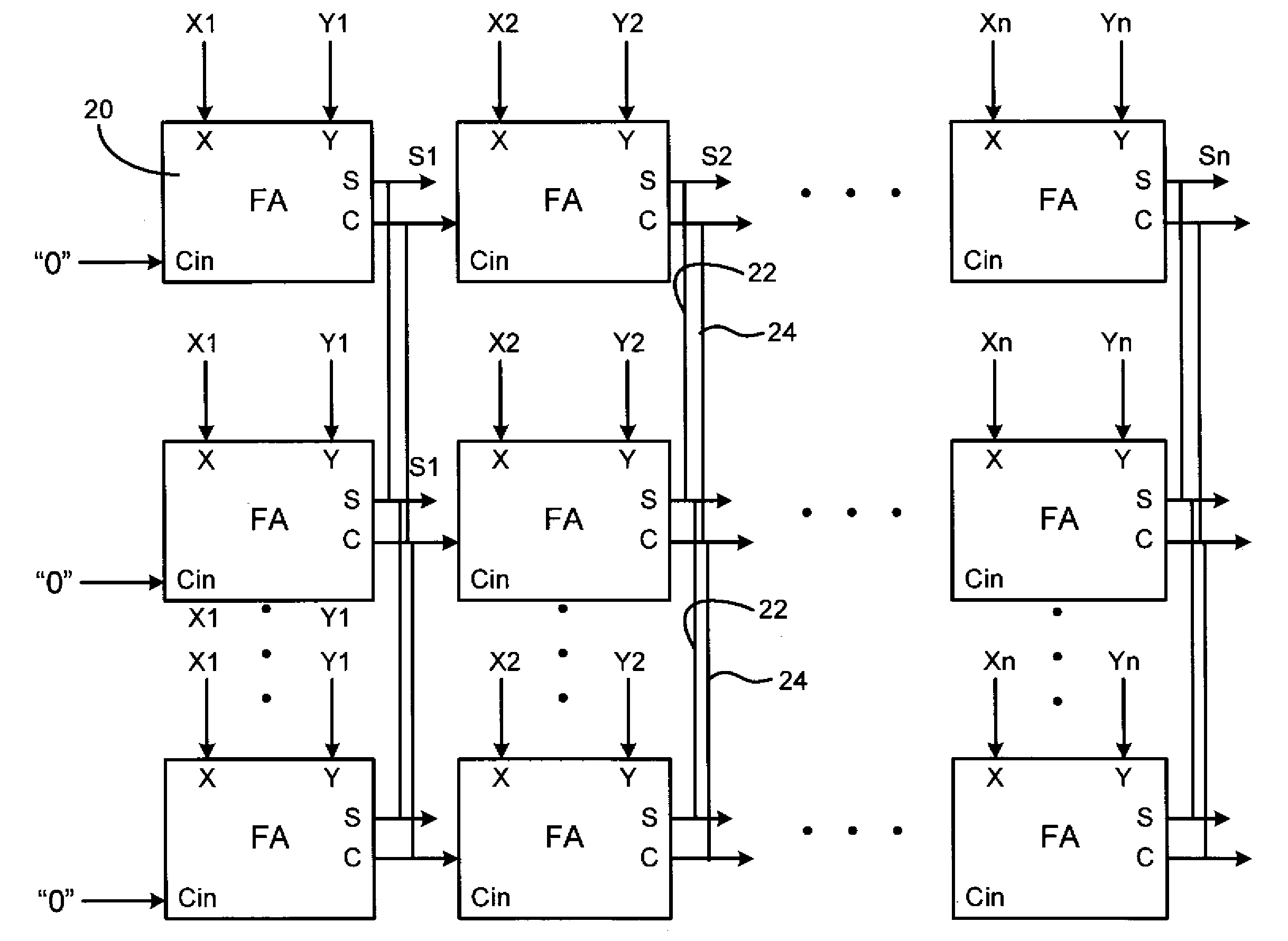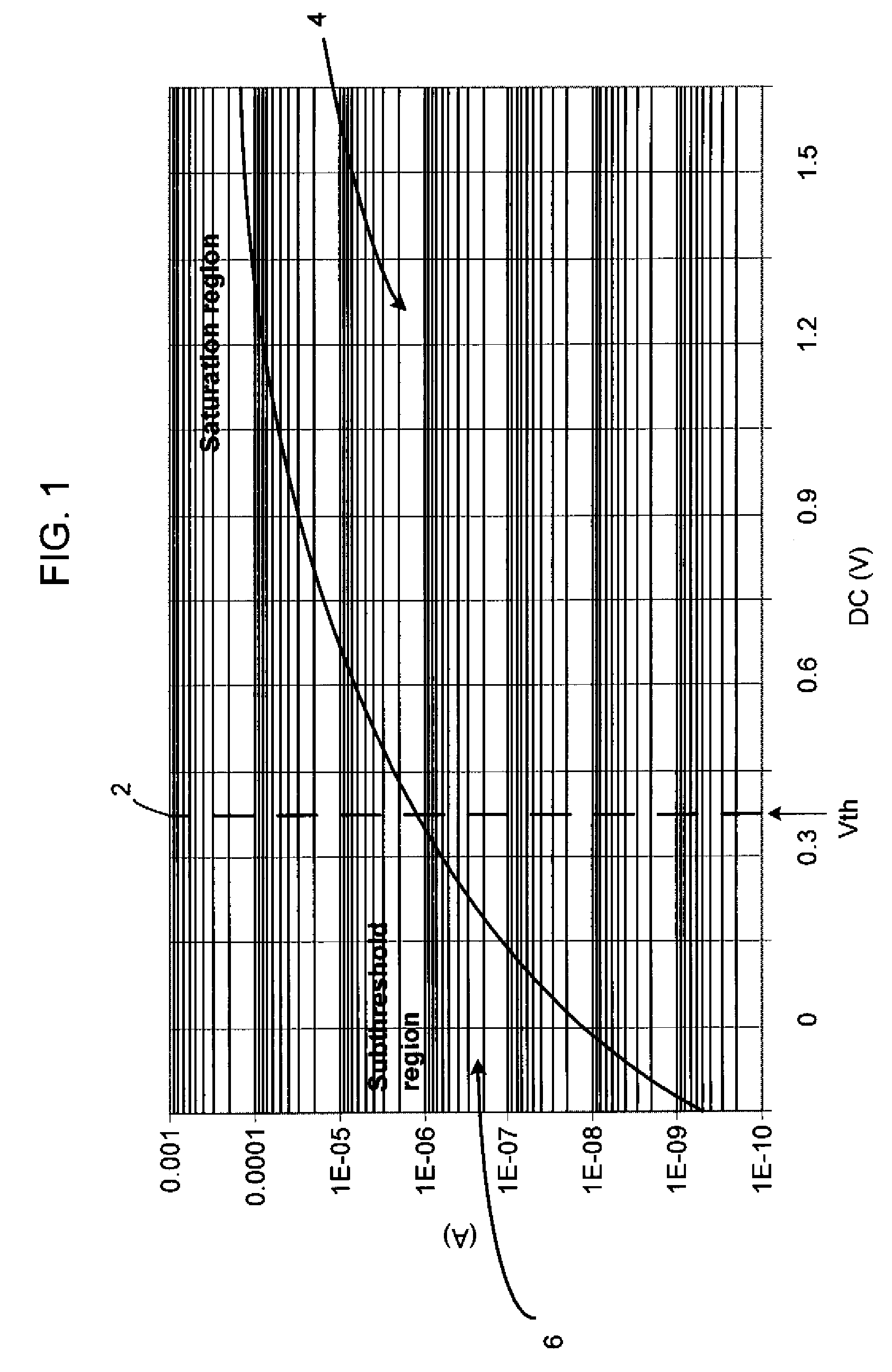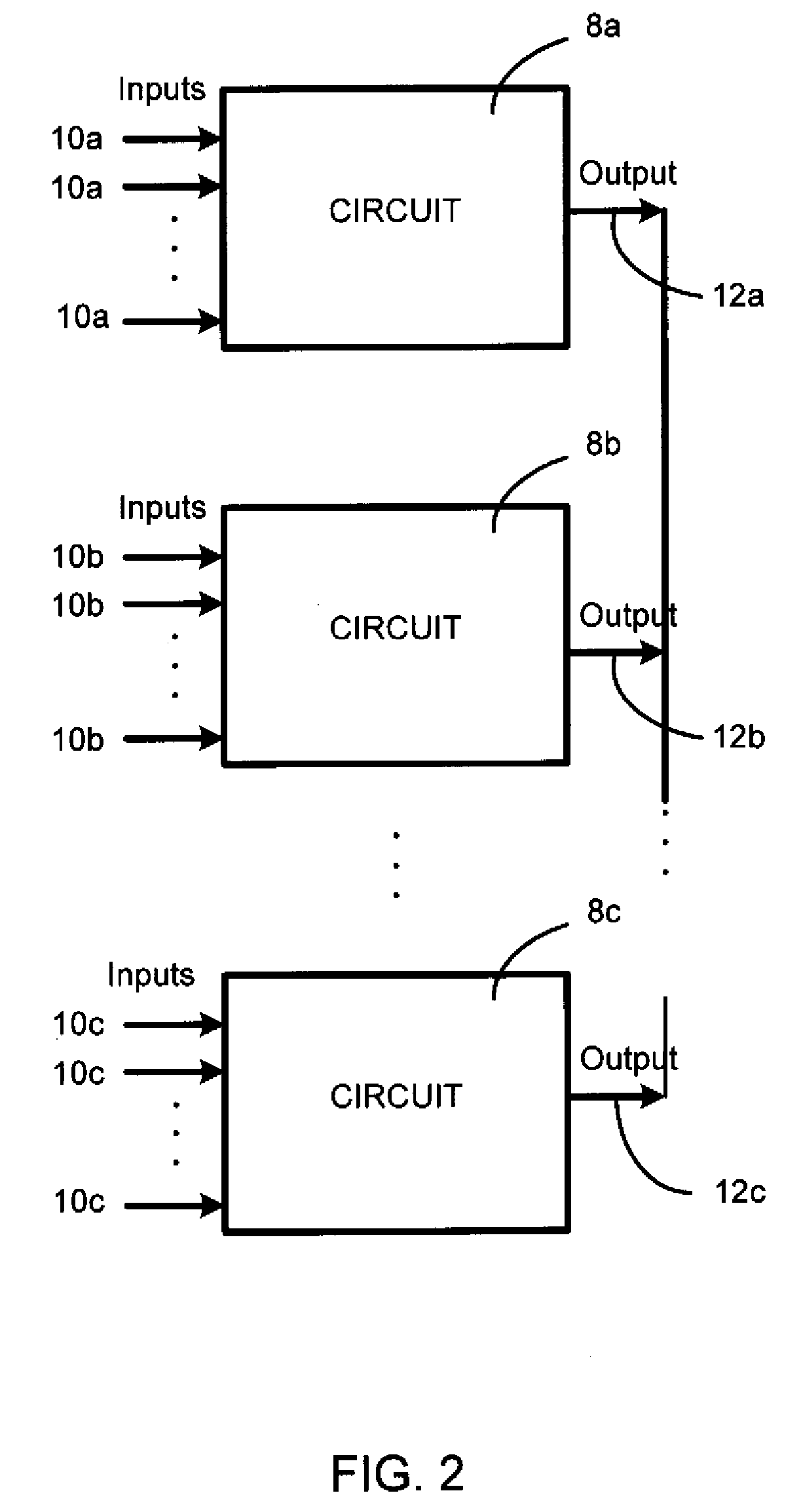Nanoelectronics
a technology of nanoelectronics and nanoelectronic components, applied in the direction of electrical instruments, electric digital data processing, electrical equipment, etc., can solve the problems of increasing power density, affecting the efficiency of microprocessors, etc., to achieve simple and robust solutions.
- Summary
- Abstract
- Description
- Claims
- Application Information
AI Technical Summary
Benefits of technology
Problems solved by technology
Method used
Image
Examples
Embodiment Construction
[0018]Firstly transistors are utilised in their sub-threshold region, i.e. with their supply voltage lower than the absolute values of their inherent threshold voltages.
[0019]Operating transistors in the sub-threshold domain means that there is an approximately exponential relationship between the voltage across the gate and source nodes and the corresponding current passed between the source and drain nodes. The exponential relationship arises from the underlying diffusion of charge carriers across a barrier which is governed by a Boltzmann distribution. Thus the sub-threshold region in which the transistors are configured to operate in accordance with the invention is the one in which the source-drain current is dominated by exponential currents rising from modulated Boltzmann distributed energies. This region of the response curve of a transistor is also know as the weak or moderate inversion region. By contrast the traditional saturation region, where the vast majority of electr...
PUM
 Login to View More
Login to View More Abstract
Description
Claims
Application Information
 Login to View More
Login to View More - R&D
- Intellectual Property
- Life Sciences
- Materials
- Tech Scout
- Unparalleled Data Quality
- Higher Quality Content
- 60% Fewer Hallucinations
Browse by: Latest US Patents, China's latest patents, Technical Efficacy Thesaurus, Application Domain, Technology Topic, Popular Technical Reports.
© 2025 PatSnap. All rights reserved.Legal|Privacy policy|Modern Slavery Act Transparency Statement|Sitemap|About US| Contact US: help@patsnap.com



